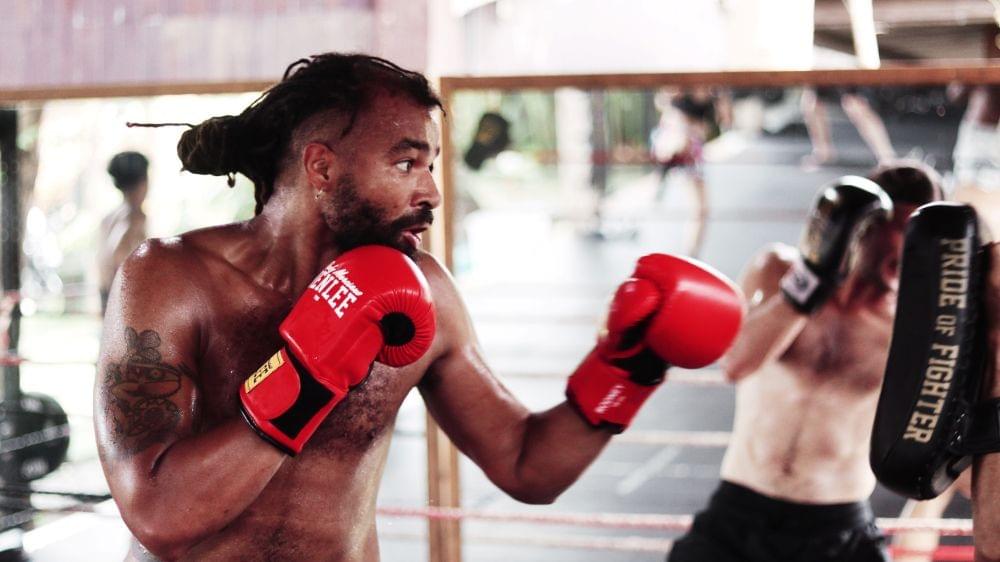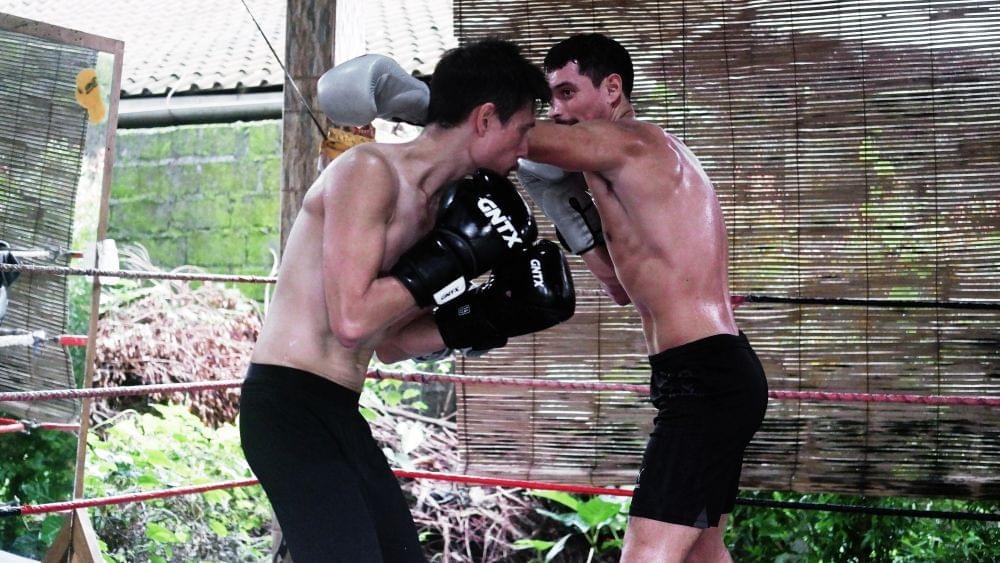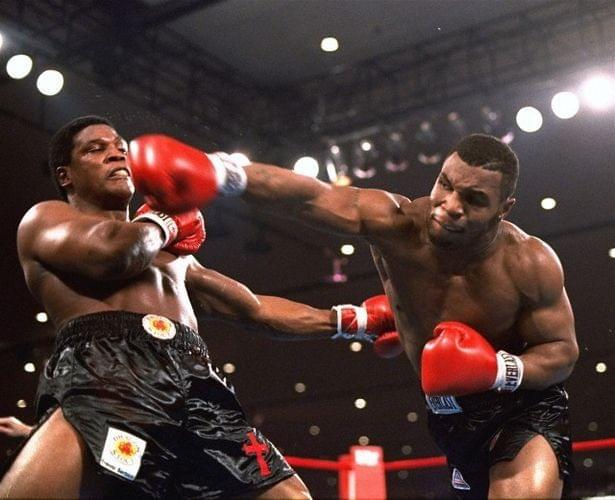In the squared circle, few stats draw more attention than a fighter’s reach. It’s a number touted in pre-fight breakdowns and often treated like an automatic advantage. But while reach can influence a match, what a fighter does with it matters far more than arm length alone.
In this article, we’ll break down what reach means in boxing, how it’s measured, and, most importantly, the strategic adjustments fighters use to win, regardless of their physical dimensions. From long-limbed jabbers to compact power punchers, success comes from tactics, not just wingspan.
What Is Reach in Boxing and Why Does It Matter
Reach in boxing refers to the total distance from fingertip to fingertip with arms extended horizontally. It’s often seen as a key indicator of striking range, especially for the jab, and can shape a fighter’s style and game plan.
A longer reach allows a boxer to hit from the outside and keep opponents at bay. Shorter reach fighters often need to close the distance, using movement, angles, and clinching tactics to neutralize the gap. But again, reach is just a number, the application of skills is what truly counts.
How to Measure Reach Accurately

To accurately measure reach, a fighter stands with arms fully extended horizontally at shoulder height, and the distance is measured from the tip of the middle finger on one hand to the tip of the middle finger on the other. This measurement is also referred to as the fighter’s “wingspan.”
However, this number alone doesn’t always tell the full story. Arm length, from shoulder joint to closed fist, can be more impactful in specific scenarios like close-range exchanges or during a boxing clinch, where leverage and inside control matter more than total reach.
What a Reach Advantage Really Does
A reach advantage allows fighters to land punches while staying outside their opponent’s range. This can help control the pace of the fight, dictate distance, and accumulate points with minimal risk of taking damage. Fighters with longer reach can force opponents to fight at a range that benefits them, maintaining control with jabs, straights, and movement.
However, having a reach advantage doesn’t guarantee dominance. Physical attributes alone don’t win fights, strategy does. Shorter fighters often develop superior timing, head movement, and inside tactics to overcome the distance.
They learn to slip inside the jab, work the body with explosive combinations, and engage in controlled clinching to neutralize the reach gap. When executed properly and within boxing clinch rules, this strategy allows them to disrupt rhythm, recover, and reset on their terms. Ultimately, what matters most is how effectively a fighter manages distance and imposes their style, not simply how far their arms can reach.
Strategies for Long-Reach Fighters
Boxers with a long reach have the potential to control the fight from the outside, but that potential must be paired with sharp tactics. Simply having long arms doesn’t guarantee dominance. These fighters must focus on using their range efficiently to dictate the fight’s pace and structure.
1. Establishing a Consistent Jab

The jab is the foundation of long-range control. A well-timed jab not only scores points but also disrupts the opponent’s rhythm and timing. Long-reach fighters should use double and triple jabs to manage distance and break through an advancing guard.
2. Footwork to Maintain Range
Reach is only useful if the distance is preserved. Fighters must constantly move laterally, pivot after combinations, and avoid backing straight up. Good footwork helps maintain striking range while avoiding being cornered or pressured.
3. Frame and Reset in the Clinch
When opponents close the gap, framing with the forearm or shoulder allows long-reach fighters to create space and re-establish their range. Clinching, executed legally under boxing clinch rules, can be used to stop inside flurries and reset the distance. A quick break followed by a jab re-establishes dominance.
4. Sharp Counters on Entries

Longer reach creates opportunities for intercepting counters. When shorter fighters attempt to get inside, use straight rights, step-back hooks, or check uppercuts to catch them mid-transition. Precision and timing here can deter future entries.
5. High Volume with Control
Long-armed fighters can throw more punches without compromising balance if they stick to straight, compact strikes. Volume combined with accuracy allows them to pile up points and keep pressure on without needing to brawl.
Tactics for Short-Reach Fighters
Shorter-reach fighters can absolutely dominate fights if they understand how to turn their compact frame into a tool of pressure, speed, and inside control. These fighters thrive in close range, where reach becomes irrelevant and power, positioning, and fight IQ take over.
1. Close the Distance with Movement
Slip jabs, roll under hooks, and use quick lateral footwork to close the gap. Head movement must be constant to avoid getting picked off on the way in. Combining slips with feints helps create safe entry points.
2. Explosive Entry Combinations
Don’t just walk in; enter with purpose. Short-reach fighters should explode forward behind a double jab, then unleash compact combinations, especially to the body. Once inside, they can work short hooks and uppercuts without needing to reset.
3. Control Inside Exchanges with Clinching
Knowing what is clinching in boxing becomes essential here. After landing inside, a quick clinch can stall the opponent’s counters and allow for tactical resets. Legal clinches can also wear down taller opponents who rely on range. Proper use of boxing clinch rules prevents penalties and maximizes effectiveness.
4. Target the Body Relentlessly
Long-reach fighters tend to protect their head and maintain range. A short fighter can exploit this by digging into the body, slowing down footwork, lowering the guard, and setting up powerful head shots in later rounds.
5. Angle Out After Exchanges
After delivering a flurry, short fighters should pivot or slide out at an angle, not straight back. This avoids walk-in counters and allows them to reload without giving up the advantage they just created.
Real-World Examples from Pro Fights
To see how reach strategies play out at the highest level, it's helpful to look at professional bouts where fighters successfully adapted their tactics to their physical attributes. These real-world cases highlight how smart adjustments can overcome or enhance a reach advantage.
Mike Tyson vs. Trevor Berbick (1986)

Mike Tyson entered this fight with a significant reach disadvantage, standing 5'10" with a 71-inch reach compared to Berbick’s 6'2" frame and 78-inch reach. Despite the gap, Tyson demonstrated how relentless pressure, head movement, and explosive combinations can dismantle a longer opponent.
He weaved through Berbick’s jab, closed the distance with speed, and delivered devastating hooks and uppercuts. His ability to fight inside neutralized Berbick’s range, leading to a second-round TKO. Tyson’s style showed that with the right timing and aggression, reach becomes a non-issue.
Floyd Mayweather Jr. vs. Manny Pacquiao (2015)
Mayweather, with a 5-inch reach advantage, used his trademark jab, counter-punching, and defensive mastery to control the pace of this highly anticipated bout. He kept Pacquiao at bay by using long-range straight rights and pivots to avoid being caught in exchanges.
His ability to manage distance made Pacquiao hesitant and minimized his volume punching. Mayweather also used brief, effective clinches within boxing clinch rules to smother Pacquiao's attacks when needed, illustrating how to defensively manage a reach advantage without giving up control.
Canelo Álvarez vs. Callum Smith (2020)
Despite being the shorter man with a 7-inch reach disadvantage, Canelo Álvarez dominated this fight through intelligent pressure and calculated aggression. He slipped Smith’s long jab, closed the gap efficiently, and consistently worked the body, slowing Smith down over the rounds.
Canelo also used subtle clinching to control Smith’s posture and prevent resets. By maintaining composure and managing space masterfully, he dismantled the range-based game of his taller opponent, proving that technique and timing can eclipse raw reach stats.
Reach matters, but it doesn’t decide fights. Whether you're a long-limbed tactician or a compact powerhouse, your ability to adjust and apply strategy is what wins rounds. From mastering the jab to understanding what is clinching in boxing and how to follow boxing clinch rules effectively, great fighters succeed by turning every tool, including reach, into a weapon.
Want to sharpen your boxing strategy and learn to fight smart no matter your reach? Join us at Ubud Muay Thai in Bali, where expert coaches help you transform your physical strengths into real ring advantages.

